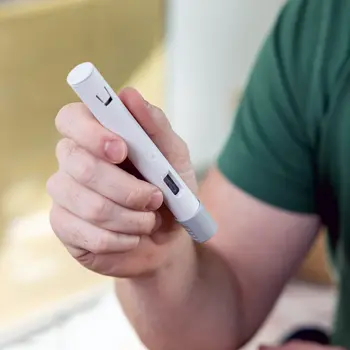Auriculotherapy: A Comprehensive Guide to Ear-Based Healing
Understanding Auriculotherapy
Auriculotherapy is a form of alternative medicine based on the idea that the ear is a microsystem representing the entire body.
In auriculotherapy, various organs and systems are believed to correspond to specific points on the ear. Practitioners of auriculotherapy believe they can address and treat various health conditions through stimulating these points.
Auriculotherapy has its roots in traditional Chinese medicine, where the ear has long been considered a crucial area for diagnosis and treatment. The practice evolved over centuries, with ancient texts detailing ear points corresponding to different body parts. In the mid-20th century, French neurologist Dr. Paul Nogier further developed auriculotherapy by mapping the ear and correlating points with specific health issues. This development brought auriculotherapy to the Western world, where it gained recognition as a complementary therapy.
The auriculotherapy method includes the use of needles (acupuncture), as well as seeds and magnetic balls (acupressure).
Get prescription weight loss medication online.
Find out if you're eligible for GLP-1s, and get started on your weight loss journey for as low as $75/month.


The Science Behind Auriculotherapy
The ear’s anatomy is complex, with numerous points believed to correspond to different parts of the body. This concept is visualized as an inverted fetus, with the head located at the earlobe and the feet at the top of the ear. Each point on the ear is mapped to a specific organ or system, allowing practitioners to target and heal certain health conditions.
Applications of Auriculotherapy
Auriculotherapy has shown diverse potential benefits across various health conditions, including:
Pain management: A 2017 study concluded that auriculotherapy may be useful for pain management.
Stress and anxiety reduction: Studies suggest that auriculotherapy is a promising stress reduction technique for people who are exposed to severe traumatic stress.
Treatment of addictions: Apitherapy has been helpful in treating addictions such as opioids, cocaine, alcohol, heroin, nicotine, and gambling.
Sleep disorders: While high-quality systematic review is still lacking, auriculotherapy has shown promising results in treating sleep disorders such as insomnia.
Again, more research is needed to further substantiate these findings and understand the full scope of auriculotherapy's potential benefits.
Auriculotherapy for Weight Loss
In Japan, the practice of using beads to target key ear areas for weight loss has been established for over 30 years. It focuses on these three areas:
Regulation of appetite: By targeting specific points on the ear, practitioners aim to reduce cravings and promote a feeling of fullness, helping individuals manage their food intake more effectively.
Metabolism enhancement: Auriculotherapy may stimulate certain areas that influence metabolic processes, potentially increasing the body's ability to burn calories.
Emotional and stress eating management: Auriculotherapy is also believed to help manage emotional and stress-related eating. By stimulating points associated with stress relief and emotional balance, it can reduce the tendency to eat in response to stress or emotional triggers — thereby aiding in weight control.
Experimental studies suggest that auricular stimulation has effects in appetite-regulating peptides, glucose metabolism, insulin resistance, lipid metabolism, and inflammatory markers.
In studies conducted on individuals with obesity, auriculotherapy has shown positive effects on weight loss (although there are limitations).
A study presented at European Congress on Obesity (ECO) followed 81 men who were overweight or obese for three months. Acupuncture beads were placed on their ears and they were asked to cut their food intake in half. After three months, the men lost an average of 4 inches off their waist. They also reduced their body fat percentage by 4%. In addition, average BMI among the study participants dropped by almost 3 points.
While this study suggests benefits of auriculotherapy on weight loss, health experts emphasize the limitations of the study. There is no evidence that auriculotherapy helped participants control their appetite. This study is also not peer-reviewed.
Another study conducted in 2015 also showed promising results for weight loss. Ten healthy adult volunteers were randomly assigned to either an acupuncture group or a placebo group, receiving weekly treatments for one month. Significant weight loss was observed in the acupuncture group after one week. But no significant changes in active ghrelin levels were noted, unlike the placebo group, which did show significant changes. Other measured factors — — including insulin, adrenocorticotropic hormone, leptin, and adiponectin — did not significantly change in either group.
How to Receive Auriculotherapy
How can I find a qualified practitioner?
Most states require acupuncturists to be licensed – there is no exception when it comes to ear acupuncture. You can find licensed auriculotherapists in acupuncture centers, wellness centers, traditional Chinese medicine centers, and some hospitals and mechanical clinics.
What should I expect during an auriculotherapy session?
What to expect from an auriculotherapy session depends on the type of auriculotherapy:.
Acupuncture auriculotherapy will often start with an acupuncturist asking you questions to understand your health history. After, they will gently insert sterile, gentle-use needles (0.22mm) into specific points on your ear. These small and thin needles will stay for about 45 minutes. While there might be an initial discomfort, you should not feel much pain.
Acupressure auriculotherapy does not involve needles but ear seeds. Although most ear seeds contain a ripe seed from the Vaccaria plant, some might be made of ion pellets, magnets, stainless steel, titanium, ceramic or other materials. Without needing to puncture the skin, ear seeds stimulate a channel to help the patient’s condition. Like with acupuncture auriculotherapy, your session will likely start off with your practitioner asking you questions about your health.
Can I include auriculotherapy in my self-care routine?
It’s possible to apply ear seeds to yourself – but knowing where exactly to place them can be tricky. That’s why it's important to visit a licensed expert to get the full benefits of auriculotherapy in a safe manner.
Potential Risks and Side Effects
Is it safe?
Although auriculotherapy is typically considered safe, it’s not for everyone. Pregnant women, as well as individuals with certain skin conditions – such as eczema and psoriasis – should not participate in auriculotherapy sessions.
Auriculotherapy also might not be a good option for those with pre-existing bleeding disorders or ear infections.
Are there any side effects?
While generally safe, auriculotherapy can have some risks and side effects, including:
Infection: Poor hygiene or improper technique can lead to infections at the needle sites.
Pain or discomfort: Some individuals may experience pain, tenderness, or discomfort during or after the treatment.
Bruising or bleeding: Minor bruising or bleeding can occur, particularly in individuals with sensitive skin or bleeding disorders.
Dizziness or fainting: Some people may feel lightheaded or faint, especially if they are anxious about needles.
Allergic reactions: Rarely, individuals might experience allergic reactions to the needles or materials used in the treatment.
What is an Alternative Option for Weight Loss?
As mentioned, some people look to auriculotherapy to help with weight loss. If you’re looking to lose weight, but auriculotherapy isn’t for you, there are a variety of nutritional and exercise plans you can explore. In addition, GLP-1 medications may be an option if you qualify.
GLP-1 medications, also known as GLP-1 receptor agonists, work by mimicking natural hormones to regulate digestion and appetite, which helps control blood sugar levels and reduce hunger. They can promote weight loss by:
Regulating appetite: GLP-1 medications reduce appetite and increase feelings of fullness, leading to reduced food intake.
Slowing gastric emptying: They slow down the rate at which food moves from the stomach to the intestines, helping to control hunger and stabilize blood sugar levels.
Enhancing insulin secretion: GLP-1 medications stimulate insulin production in response to meals, which can improve blood sugar control and promote weight loss.
Ready to achieve your weight loss goals?
Shed pounds with GLP-1 medication prescribed online by licensed healthcare providers for as low as $75/month.


How Can LifeMD Help?
While LifeMD does not provide auriculotherapy, a team of board-certified healthcare professionals is available to address a variety of health needs, including weight management.
The LifeMD Weight Management Program can help you achieve your weight loss goals. If you qualify, you can get access to groundbreaking GLP-1 medications like Ozempic®, Zepbound® and Wegovy® — alongside clinical oversight from licensed healthcare providers.
More articles like this
Feel better with LifeMD.
Your doctor is online and ready to see you.
Join LifeMD for seamless, personalized care — combining expert medical guidance, convenient prescriptions, and 24/7 virtual access to urgent and primary care.

GLP-1
Zepbound® Wegovy® Saxenda®
This is it! Be part of the weight loss movement everyone’s talking about.
Get Started Now
 Medically reviewed and edited by
Medically reviewed and edited by 










